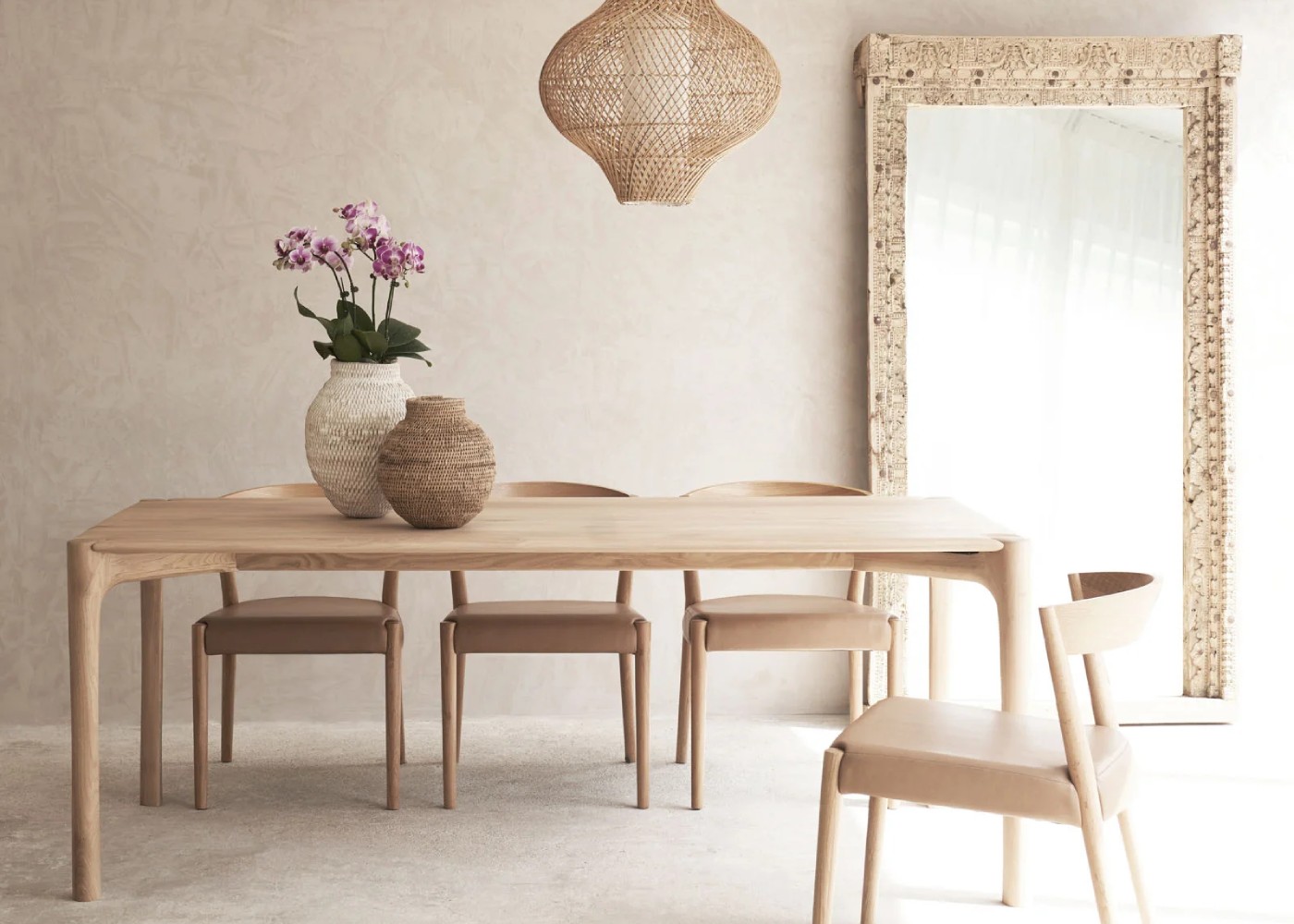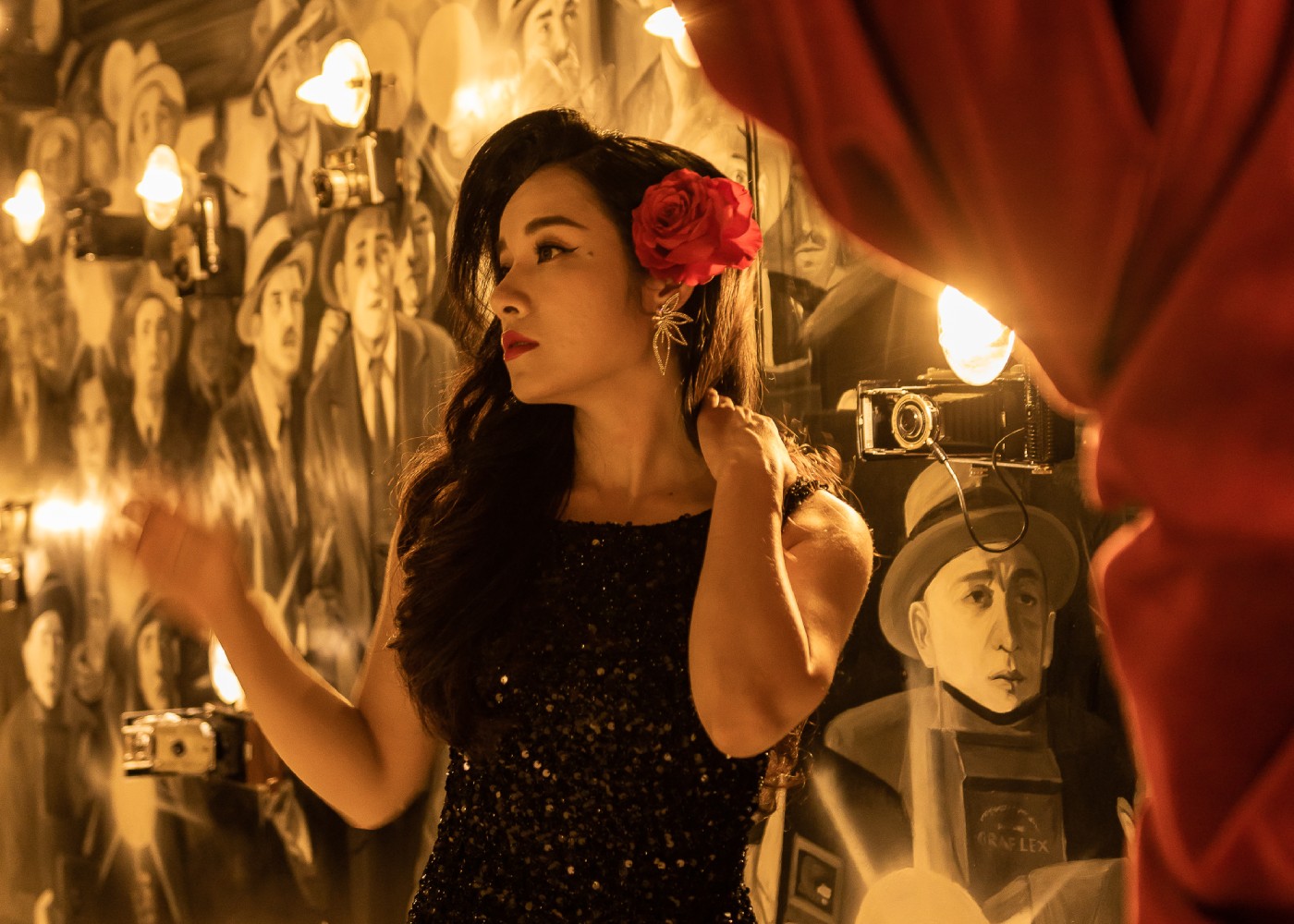Levi’s Unique Store Design: A Blueprint for Exceptional Customer Experience in Asia
Published on October 3, 2024 | by DSGN arcHive
We sit down with Daniel Ho, Director of Brand Experience for East Asia Pacific at Levi Strauss & Co., to get the inside scoop. Keep reading for all the exciting details!

Levi’s has truly perfected the art of merging classic, laid-back denim with innovative design, crafting fashion that stands the test of time. What really sets Levi’s apart, however, is its exceptional store design strategy, a cornerstone of its success. With eye-catching displays and immersive in-store experiences, Levi’s creates inviting spaces that engage customers from the moment they step inside. Every detail is meticulously crafted to elevate the shopping experience, transforming it from a mundane chore into a memorable event.
To delve deeper into Levi’s unique brand experiences and their impact on Asia’s retail landscape, we caught up with Daniel Ho, Director of Brand Experience for East Asia Pacific at Levi Strauss & Co. Scroll down for all the details.
How Levi's Store Design Elevates the Customer Experience in Asia
1. What does a typical day look like for a Levi's® Director of Brand Experience?
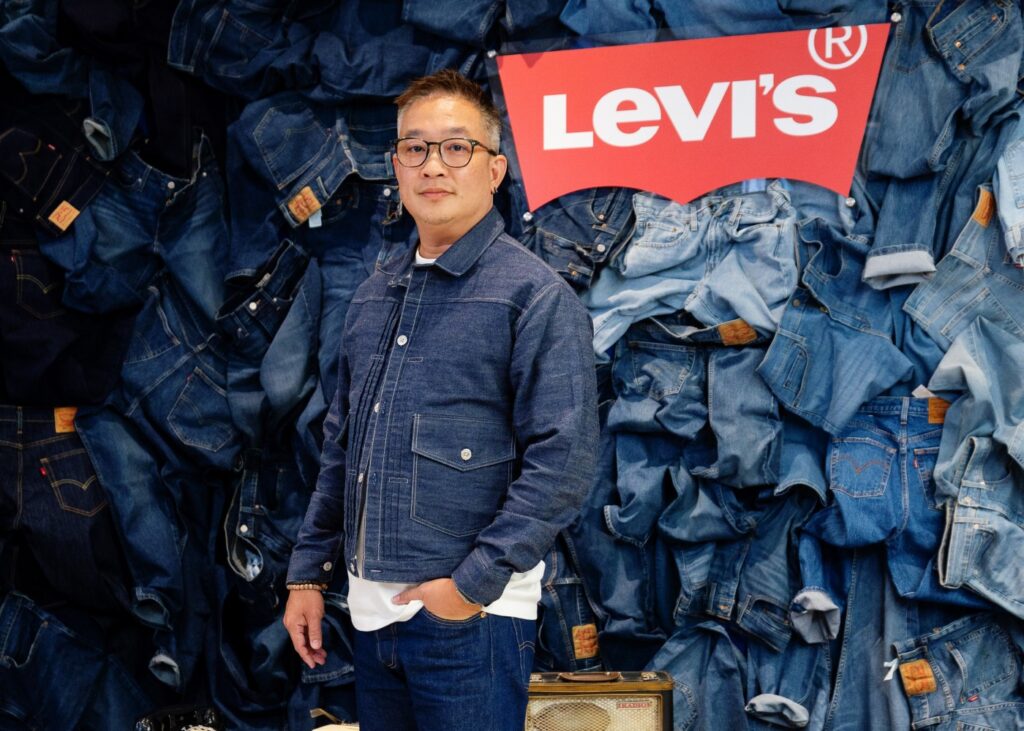
As Director of Brand Experience for LS&Co. East Asia Pacific, my day is always filled with excitement and challenges as I work to create immersive and memorable experiences at the store for our consumers.
My day typically starts early, with a review of the day’s schedule and a quick check of emails and messages. I often have meetings with my team to discuss ongoing and future projects, brainstorm ideas for new campaigns, and review feedback from recent initiatives.
A key part of my role is working closely with various functions within the company – from store design, to marketing, to merchandising and planning, to retail operations – to ensure that our brand message and product presentation is consistent across all touchpoints. I collaborate and partner with these teams to develop strategies that will resound with our target audience and drive engagement with our brand. I’ve found that being able to collaborate on-site is important – I’m often working in-store with my team on different projects, be it for a new campaign launch, or the putting together of a new store.

To stay ahead of the curve and ensure our stores continue to deliver the immersive experiences our customers want, I also keep up with industry trends and competitor activities.
As the day comes to a close, I reflect on the progress we’ve made and start to plan for the next day’s tasks and priorities. It’s a fast-paced and dynamic role, but I love the challenge of constantly pushing the boundaries of what’s possible to create impactful brand experiences that resonate with denim fans in the region.
2. Can you explain how Levi’s® DTC-first approach enhances the overall customer experience?
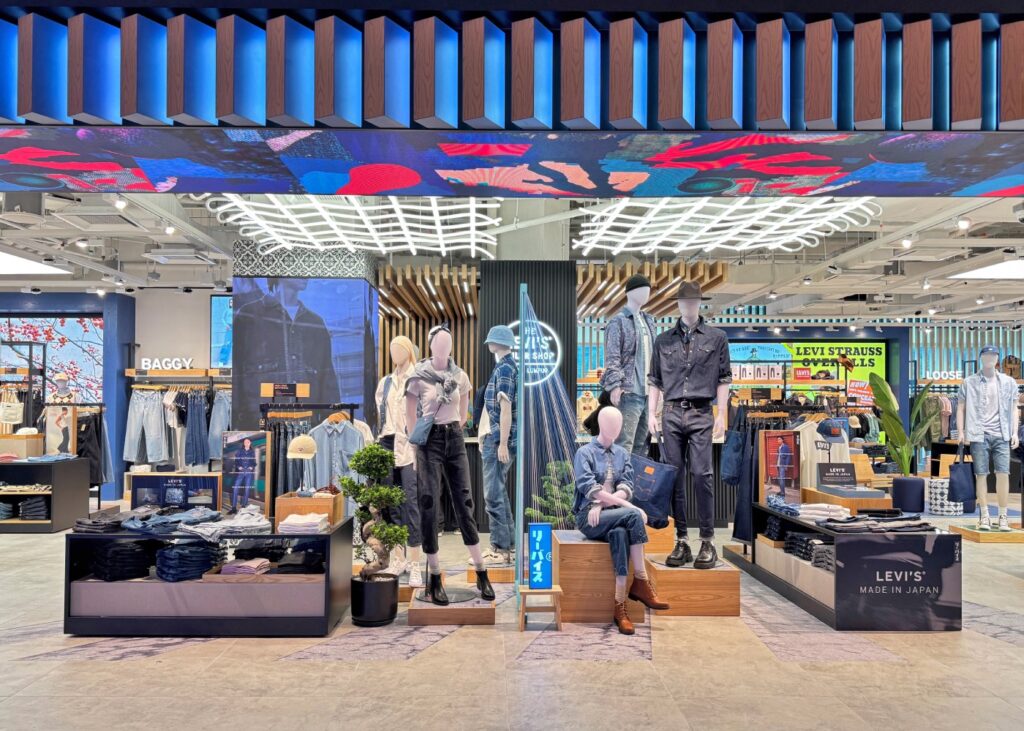
Our Direct-to-Consumer (DTC-first) approach puts the customer at the center at all times. We want to be where our customers are, constantly obsessed with them, and cultivate lifelong fans of our brand. A stellar retail experience is central to this goal: we are focused on giving customers a better, more immersive shopping experience, both in-store and online.
The NextGen store concept is a great illustration of this. From style lounges, to digital elements like LED in-store displays, to our signature Tailor Shops, everything is designed to create an elevated end-to-end retail experience. Our stores are not just “somewhere to buy a pair of jeans” – it’s where consumers can experience the fullest expression of our brand.

The DTC-first approach also means we have a robust direct channel to connect with customers in each market, allowing us to bring them the products and apparel that resonate most. We can also react quicker to the evolving needs of customers in each market, and quickly jump on an opportunity as needed. For example, we saw an opportunity to launch a climate-relevant line in Southeast Asia, where the weather is warm all year round. The Performance Cool line was developed and launched in the region last year. It saw excellent traction, and we are now bringing this innovation to new markets. In our Southeast Asian stores, Performance Cool apparel features quite prominently, as many of our customers in these markets naturally gravitate towards these products.

Similarly, we recognize that many customers seek authenticity and craftsmanship. This is why we also offer premium collections like Levi’s® Vintage Clothing (LVC) and our Made in Japan (MIJ) line across our stores. These collections are designed to tell the story of Levi’s ® rich history and craftsmanship, whether through the meticulous reproductions of our most iconic 501® Jeans in the LVC line or the artisanal attention to detail found in our MIJ products.
In this way, we are constantly anticipating our customers’ in-store needs, even in terms of product assortment and display. Each of these lines complements our broader strategy of meeting diverse customer needs and blending local relevance with global heritage.
3. What key factors does Levi’s® consider when selecting a new store location in East Asia Pacific to align with the brand’s image and customer expectations?
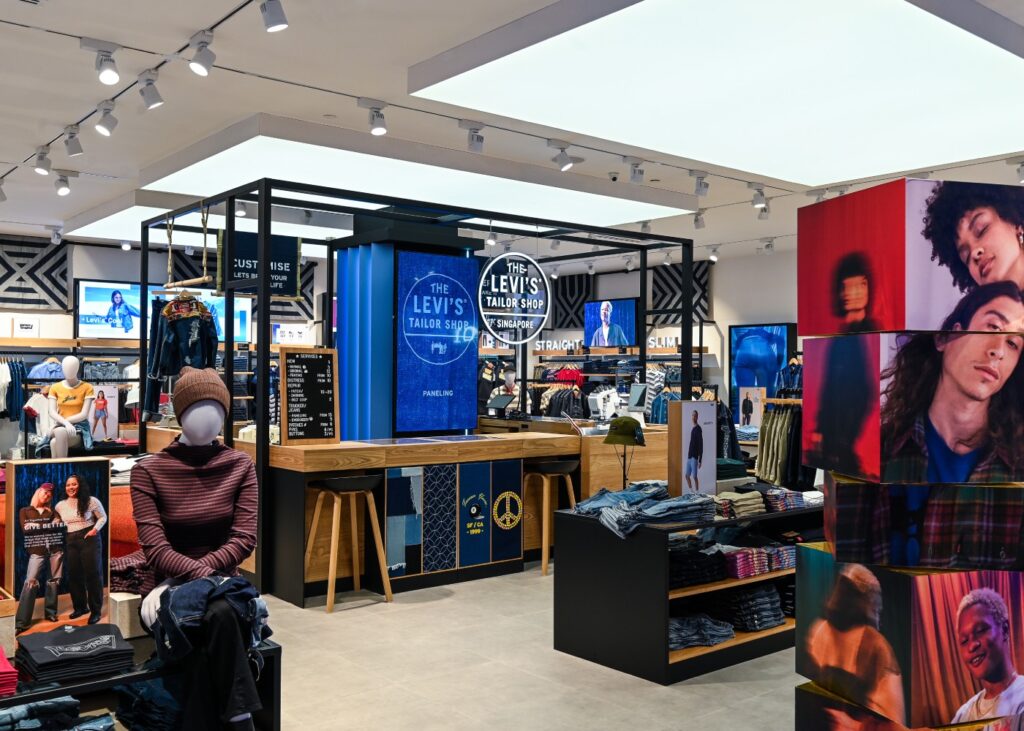
The key consideration is to be where our customers are. The East Asia Pacific region, in particular, has a vibrant and dynamic customer base of youths who are in step with fashion and always ahead of the trends – so we want to make sure there’s a Levi’s® store wherever they shop.
Across the region, we have selected popular shopping districts for our key NextGen stores, such as: Suria KLCC, in the heart of Kuala Lumpur, Malaysia; Emporium Melbourne, Australia, in the buzzing Central Business District; ION Orchard mall in Singapore, in the heart of the Orchard Road shopping hub; CentralWorld mall in Bangkok, Thailand, in the Chidlom shopping district; Teramachi Kyogoku shopping district in Kyoto, Japan
Simply put, we want to be at the center of culture globally. This means paying attention to what our consumers want and delivering that to them when and where they want it.
4. How does Levi’s® adapt its store designs to reflect the local culture and preferences in different regions? Can you provide any specific examples from East Asia Pacific?

Now, more than ever, in-store retail experiences need to be immersive and engaging. Customer expectations are incredibly high. An impactful, meaningful and memorable in-store experience can go a long way in building lifelong fans of the brand – and that is the goal whenever we design a store. We want the in-store experience to be something people look forward to and constantly return to. Our values of empathy and originality are our north-star here.
We developed the NextGen Indigo store concept to embody the Levi’s® legacy of commitment to service, quality, durability and style. Each design element is representative of our global commitment to elevated retail experiences – from style lounges, to modern fitting rooms, to LED in-store displays, to our Tailor Shops, which are customization, alteration, and restoration stations where consumers can make their Levi’s® truly their own through patches, embroidery, and more.
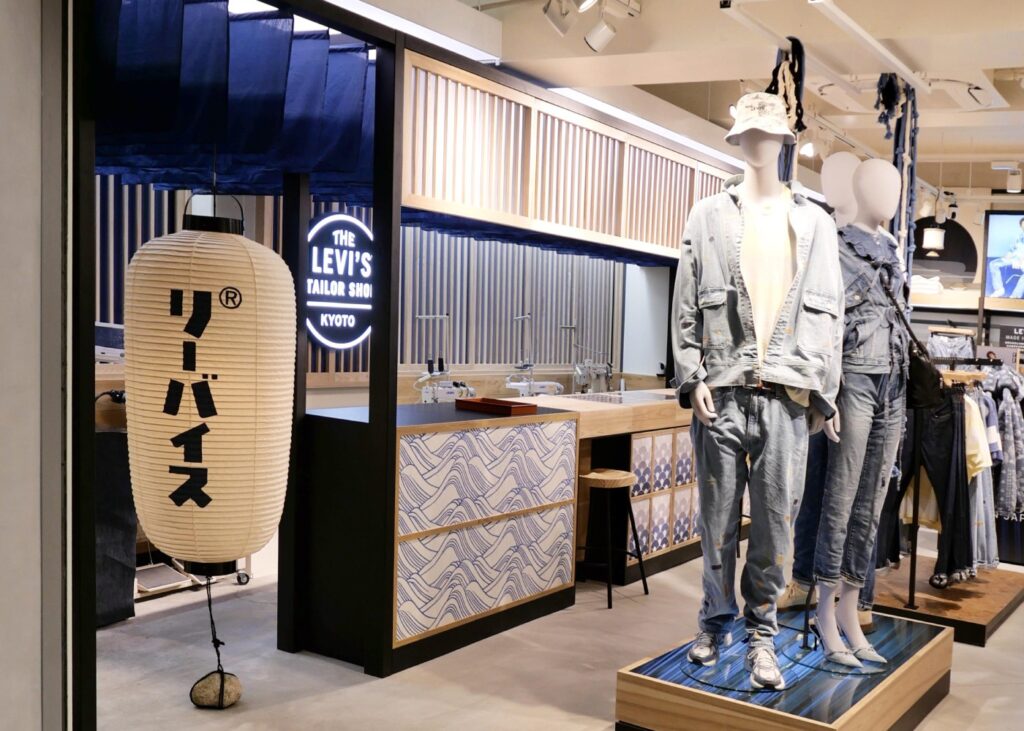
That said, it’s crucial that we localize these stores to resonate with the market’s consumers. Rather than simply importing our global store concepts as is, we take great pains to ensure there are specific local design nuances throughout the stores, in order to pay respect and homage to the markets we operate in. For instance, our recently reopened Kyoto store draws inspiration from the ancient city’s unique history and culture, with lanterns made by historical Kyoto-based lantern maker Kojima Shoten and décor elements made with kara-kami paper from long-established local brand Karacho.
Our 170-year heritage has served us well so far, and we undoubtedly want to weave in elements of this into our stores globally. But as much as we bring Levi’s® to cities across the globe, we want to bring elements of these global cities into Levi’s® stores, too. It’s a two-way design philosophy that helps us create retail experiences that are thoughtful, relevant, and that resonate with the local consumer.
5. What are some specific design elements or layouts that have proven to increase conversions in Levi’s® stores?
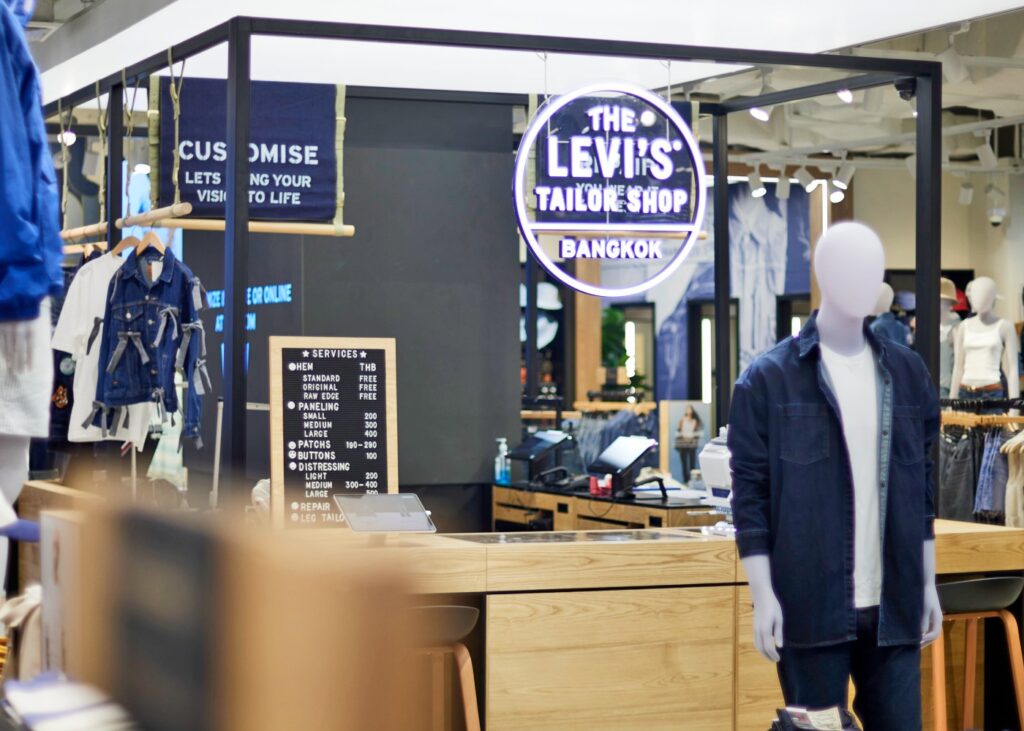
Our NextGen Indigo store concept was designed to enhance the consumer shopping experience and boost conversations. Every element, from the entryways to fitting rooms to Levi’s® Tailor Shops, aims to create a unique, welcoming, and memorable store experience that mirrors our brand heritage and allows shoppers to discover our brand and make it part of their stories. Some signature elements include:
Levi’s® Tailor Shops
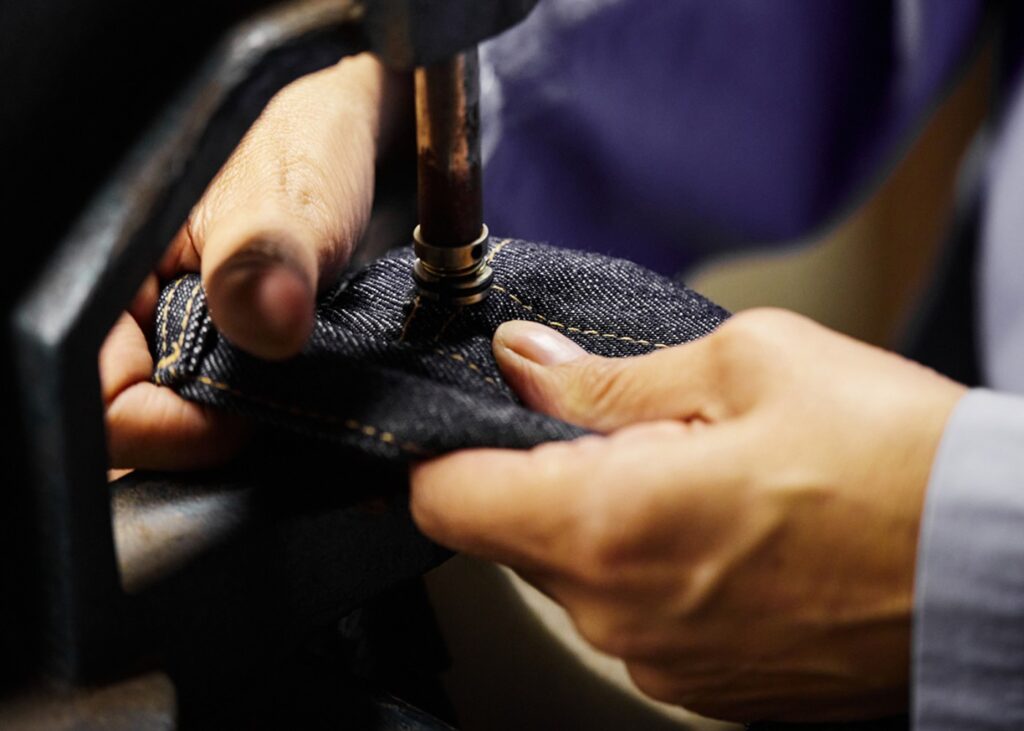
Individuality and customization have been central to our brand from the very beginning. Today, Levi’s® Tailor Shops embody this craftsmanship and serve as a destination for denim aficionados to breathe life into their apparel through bespoke embroidery, patches, and fabric paneling. As such, each Tailor Shop serves as the centerpiece and focal point of the store.
Interactive counters anchored by personalization tablets contribute to the co-creative experience and facilitate conversations with our tailors so customers can be as imaginative and expressive as they want to be. Each store also curates an eclectic ensemble of customization options, showcasing seasonal or location-specific exclusives and collaborative endeavors with cultural luminaries, and ultimately echoing the brand’s ethos of originality.
Example: The Kyoto store offers rare fabric from the famed Chingireya antique textile store, as well as patches designed by local illustrator Hideto Honda.
Blending the digital and physical store experience
We know that consumers like to interact with brands in increasingly hybrid ways, so blending the physical and digital experience is a core tenet of NextGen Indigo stores. We use digital tools to enhance the consumer journey, including LED portal entry archways that create eye-catching indigo ceilings, ombre pillars, and visual animations.
Within the store, LED screens are used for immersive experiential content. Digital displays showcase a more extensive selection of products and allow for the comparison of different styles and materials so shoppers can find their perfect style and fit.
Style lounges and modern fitting rooms
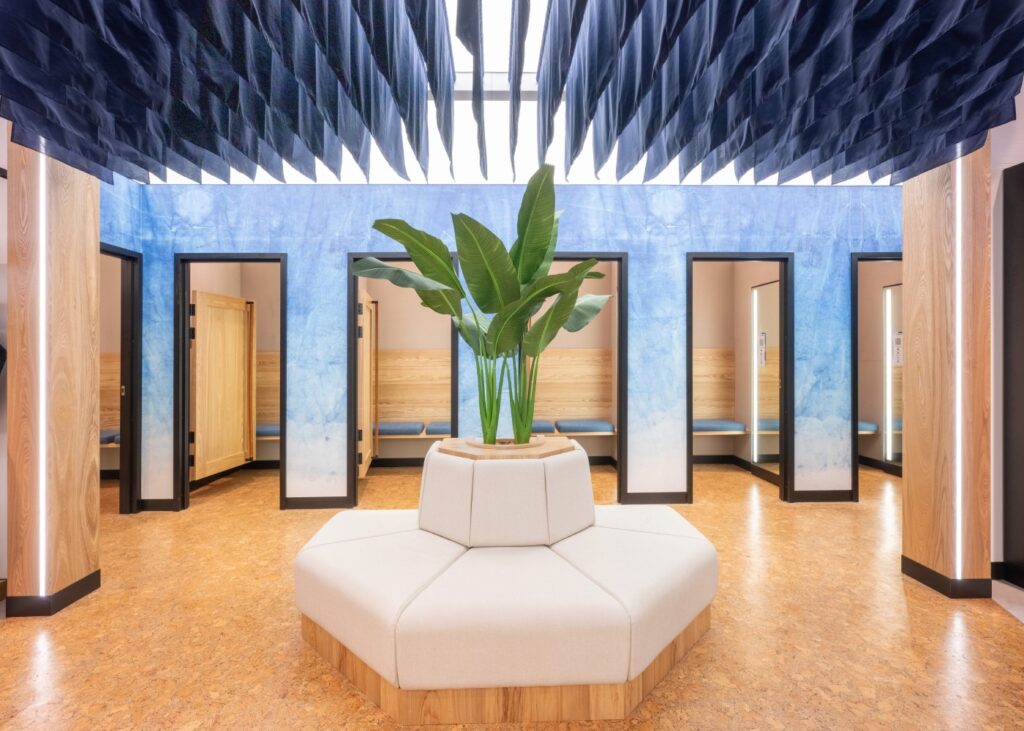
Fitting rooms are a critical part of the customer journey and where most conversions occur. As such, we prioritize creating spacious, comfortable, fitting rooms with a conducive environment for style tips and interaction with friends and Levi’s® stylists. Enhanced lighting, dedicated amenities and digital displays that create branded moments also contribute to this immersive and welcoming fitting experience.
6. How is technology integrated into Levi’s® stores to create a more seamless and engaging shopping experience?
The evolving retail landscape has also resulted in the evolution of customer expectations and retail journeys. More often than not, our customers start their retail journeys online by searching for products before the conversion happens offline at stores. Our in-store experience needs to complement the digital journey. Take, for example, a customer whose journey begins at our website: they are faced with lots of choices and want to know which is the right fit, color, and style for them. If a customer were to come to the store to make that decision, we want to deliver that variety of options, a personal touch, and an immersive experience that helps make that conversion.
Technology allows us to deliver seamless retail excellence to our customers. We have employed digital tools in-store that allow us to react quickly to potential issues, offer timely and accurate reporting, and contribute to customer satisfaction and a better store experience for everyone.

For example, our Enterprise Technology and Enterprise Resilience teams have implemented a custom incident reporting tool. LS&Co. To Go (LTG) is a retail app used by the retail team to report technical and operations issues. The app consolidates tools used by the retail teams, streamlines vendors and contracts, and reduces costs. It also allows for employee and consumer incident reporting.
The tool also provides comprehensive data and insights across all countries and clusters, allowing for visibility over trends and common issues that can be addressed through training, store design, and more.
7. What role does sustainability play in Levi’s® store design and construction?
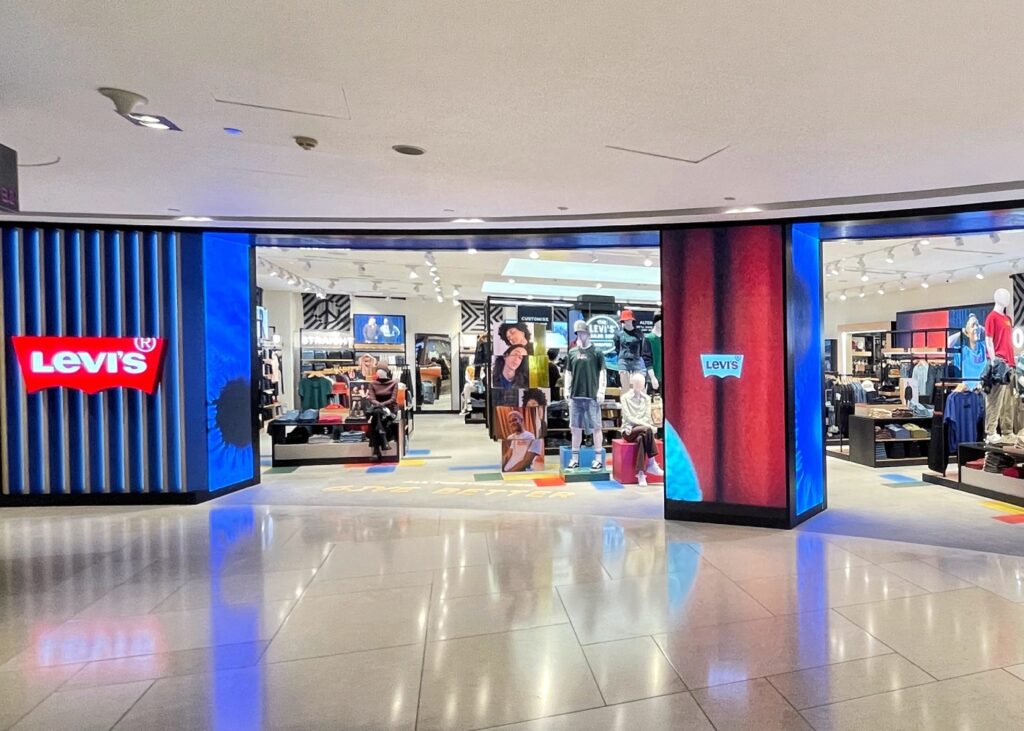
Our global sustainability strategy and goals are centered around 3 C’s: Climate, Consumption and Community, and our goals include:
1. Net-zero emissions of greenhouse gases by no later than 2050
2. 40% absolute reduction in supply chain GHG emissions by 2025
3. Develop a comprehensive plan to make the company circular ready by 2026
4. Zero waste to landfill from company-operated facilities
5. Eliminate single-use plastics in consumer-facing packaging by 2030
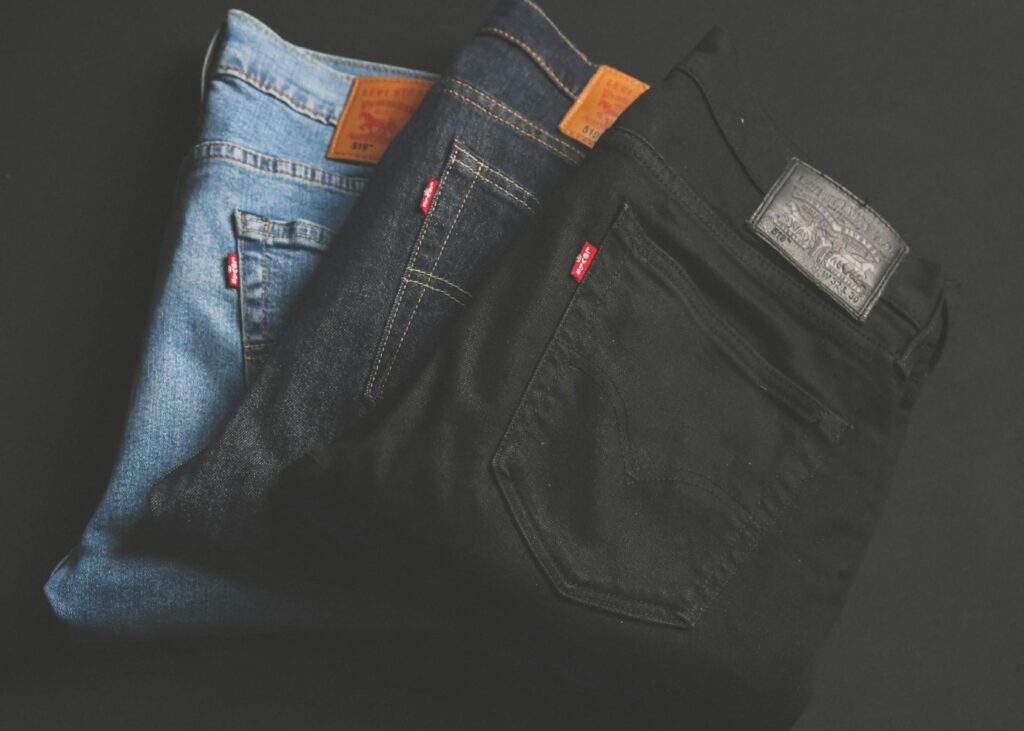
From a store design perspective, we select store locations based on the availability of renewable energy options, energy tracking, comprehensive waste and recycling programs, and high-efficiency HVACs to meet these sustainability goals.
The in-store experience also plays an important role in our sustainability efforts. In 2021, we launched our Buy Better, Wear Longer campaign to encourage more conscious purchasing decisions among our consumers. We’re also working towards improving the circularity of our products by pioneering various innovations, designing for circularity, and using recyclable and renewable materials.
The Tailor Shops across our stores also offer creative options for repair and restoration, which is one way of breathing new life into old clothes, allowing our customers to join us in our efforts to close the loop of circularity.
And there you have it! Hope you enjoyed diving into the fascinating world behind the seams of one of the most iconic apparel brands of all time. A big thank you to Daniel for chatting with us and sharing such invaluable insights!
Wondering what we’re up to next?
Give us a follow and stay in the loop!
About DSGN arcHive
DSGN arcHive is your exclusive key to unveiling the enigmatic essence of a city, all filtered through the prism of design. Far from the ordinary tourist paths. We reveal the city’s architectural marvels, urban intricacies, cultural tapestry, and eco-conscious revolutions that mold its distinctive soul. With us, you’re invited to savor the metropolis in an entirely chic and sophisticated light, a city that’s far more than what meets the eye.
What's New
Copyright © 2025 DSGN arcHive

